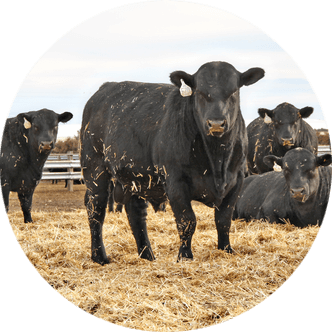USDA links catastrophic honeybee losses to high viral loads, mite resistance
What caused catastrophic honeybee colony losses earlier this year? Researchers, scientists and beekeepers have been looking for answers since January, and now new research from the U.S. Department of Agriculture’s (USDA) Agricultural Research Service has identified causes behind the devastating losses.
The findings point to alarmingly high levels of viral infections – vectored by Varroa mites with resistant genes to a common treatment – as key drivers of colony collapse, according to a news release from the Honey Bee Health Coalition, a project of the Keystone Policy Center.
“I think we always thought it would be some kind of viral load transmitted from the Varroa mite,” Matt Mulica, senior project director with the Keystone Policy Center, told The Packer. “As a reminder, the Varroa mite is ubiquitous across the country. On a human scale, it’d be about the size of a dinner plate, like a mite or tick. So, it’s very large compared to the size of a bee’s body.”
The study analyzed samples from six major commercial beekeeping operations affected by the losses, which collectively managed nearly 184,000 colonies – roughly seven percent of all U.S. hives – and reported losses averaging over 60 percent, just as bees were being staged for California’s almond pollination season, according to the Honey Bee Health Coalition.
Mulica said the biggest reveal from the research was it determined the mortality-causing viruses were Deformed Wing Virus and Acute Bee Paralysis Virus.
All Varroa mites collected from affected colonies tested positive for a genetic marker linked to resistance to amitraz – the most commonly used miticide in commercial beekeeping – said the Honey Bee Health Coalition, adding this finding underscores the “urgent need for new tools and integrated pest management strategies.”
“Any pest is going to build resistance as beekeepers or farmers try to control it by more frequent treatments and higher doses, and this was the case here,” said Mulica.
He pointed to a number of tools beekeepers use to fight against Varroa mites, including coumaphos and tau-fluvalinate, which were used in the 90s and to which eventually mites built resistance to as well.
“It’s all about rotation of chemicals and cultural techniques,” said Mulica. “Beekeepers shouldn’t be relying on amitraz as their primary mite control method. There are a whole host of other chemicals, but also cultural techniques they can use – re-queening and drone brood breaks, the removal of male bees from a honeybee hive to interrupt the Varroa mite life cycle and reduce mite populations, along with formic acid and oxalic acid and some of these other new and emerging treatments.”
A threat to U.S. food security
Late last month, the Environmental Protection Agency (EPA) which has called Varroa mites “a national threat to bee colonies and in turn to farmers with crops dependent on pollination services provided by bees and ultimately to food security in the U.S.,” proposed to register one technical and two end-use products containing the new active ingredient Vadescana – a double-stranded RNA (dsRNA) – for control against the destructive mites in honeybee hives.
“This is really promising news beekeepers now have even more tools to use, as these mites are becoming resistant to their primary tool, which is amitraz,” said Mulica.
EPA further said it is prioritizing pesticide applications which target Varroa mites to provide beekeepers with a variety of tools to combat the pest.
Where do beekeepers go from here?
“Just like all epidemic epidemiological studies, we must control the vectors of the disease and control the diseases themselves,” said Mulica. “During COVID-19, once they learned what it was, they immediately started working on a vaccine, and then they also had recommendations of how to avoid getting it.”
Mulica said the best practices applied during COVID-19 are what’s happening now in beekeeping to rebuild hive strength and avoid the virus spreading to other bee colonies.
“We have tools in the toolbox coming out which will hopefully take the place of amitraz to control the vector of the disease,” he said. “USDA is also working on antivirals. For the past 10 years, they’ve been screening hundreds of plant compounds to see what they could provide to bees to help them heal if they got these viruses.”
Preliminary recommendations and best practices to control the virus include cleaning hive tools between use or wiping down with isopropyl alcohol, and if someone has hives that are dwindling and not growing, know there’s probably something wrong so keep those hives isolated, Mulica explained.
For beekeepers who have a dead colony, Mulica recommended letting it sit and air out for a few weeks before repopulating to allow the viruses to dissipate.
While these are the Honey Bee Health Coalition’s initial recommendations, the organization is working on an FAQ, currently in draft mode, which will be released in the coming weeks.
Impact to food supply
While viruses and Varroa mites were confirmed as primary contributors, the USDA’s research also pointed to other stressors including pesticide exposure, poor nutrition and environmental conditions which may have exacerbated the losses.
“With estimated bee colony losses at 62 percent of all the hives in the country, beekeepers are working to meet their pollination services contracts for the fruits and vegetables we all rely on,” said Mulica.
In normal conditions, a beekeeper can take a strong hive and split it into up to four new hives by putting in three more queens, said Mulica, adding this is a much more challenging endeavor with fewer and weaker hives.
“An impact to food prices is a distinct possibility,” he said. “But I think beekeepers are pretty resilient, and they’re scrambling to make sure they meet those contracts.
“We’re just entering the height of the pollination season, where they’re going around to apples, blueberries and melons, various cucumbers and nuts,” he continued. “I think they’re a resilient industry and they’ll pull through, but it’s certainly going to be financially very difficult for a lot of these operations.”
Jennifer Strailey is an editorial director for Farm Journal. This article was originally published by The Packer on June 5.





